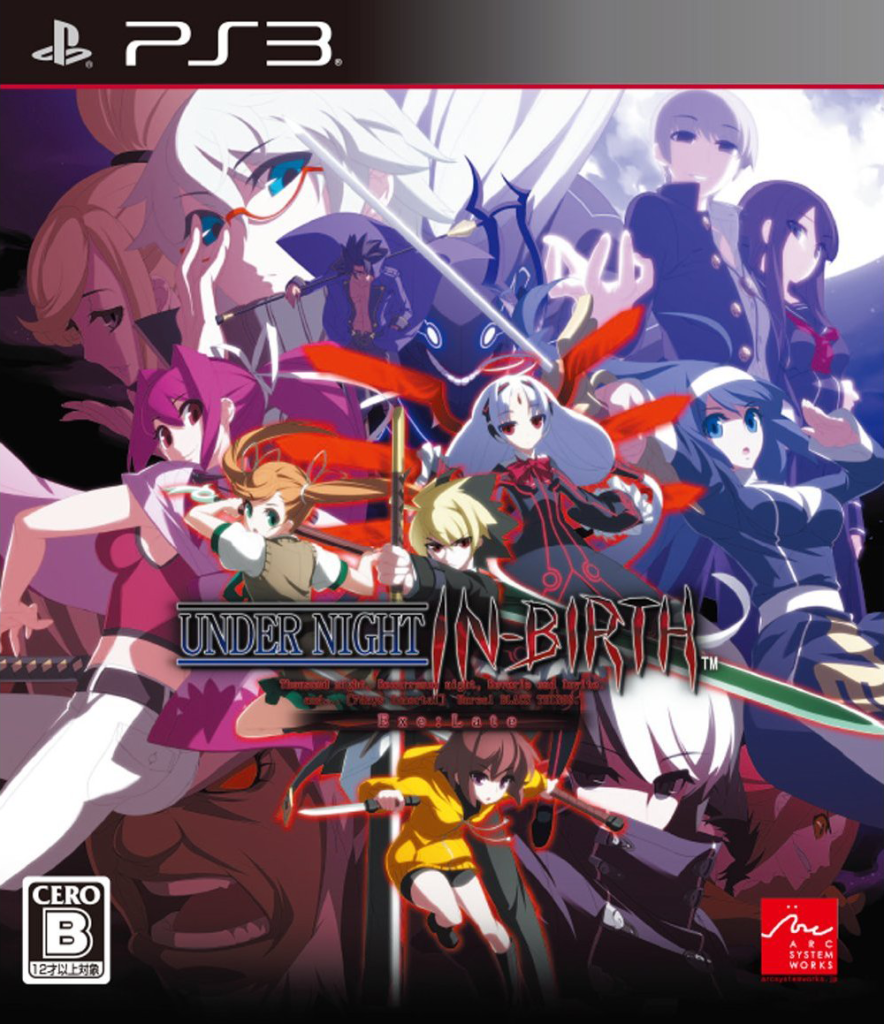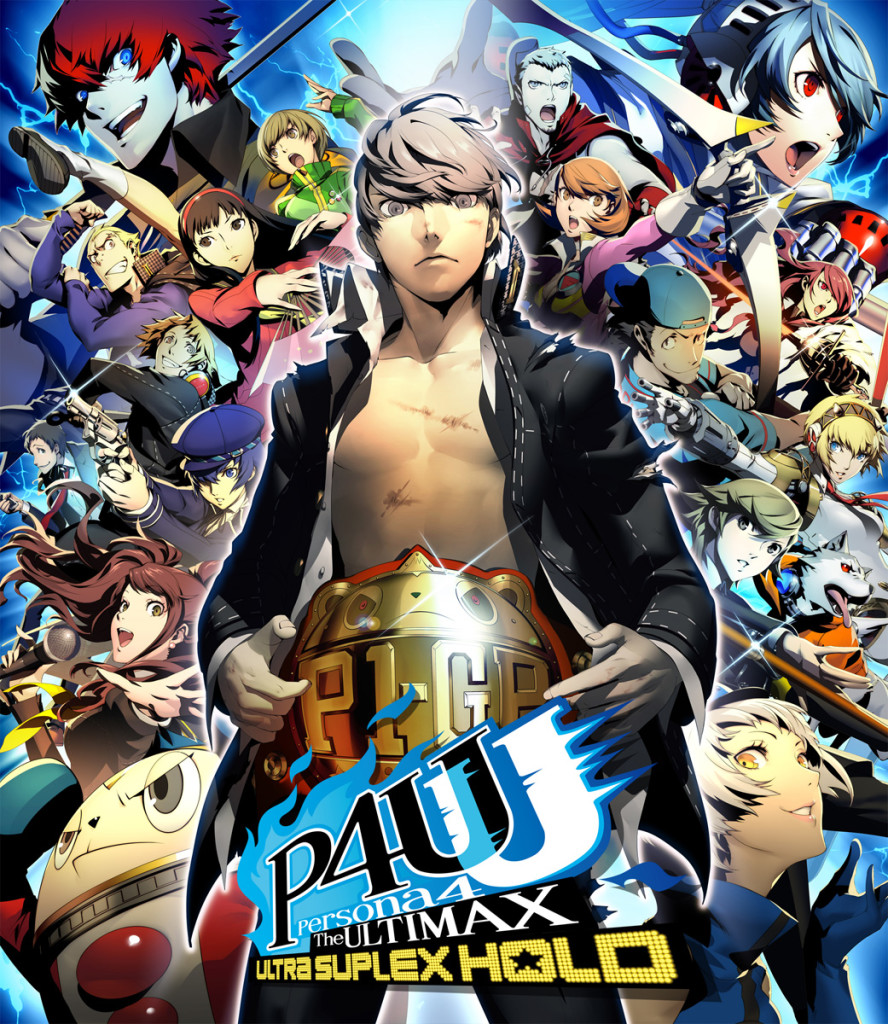Last updated on January 10, 2016
So yeah, fighting games! Woo!

Under Night In-Birth Exe Late – I didn’t think that a Japanese developer could imagine a more nonsensical name for a fighting game than Melty Blood, but French Bread (with the aid of Ecole) somehow topped themselves with this one. Apparently, this game in particular (shortened by most to UNIEL, thank God) is a new property based around some sort of nonsense plot with lots of visual novel cutscenes. I, for one, do not particularly like the way fighting games use visual novel elements, so I’m going to completely ignore all of that and talk about the actual game part.
Personally, I think there’s only so many times that the “air dash fighter” concept can work. Just off the top of my head, we’ve got Guilty Gear, BlazBlue, Arcana Heart, and probably dozens of others. UNIEL, while certainly sharing the same aesthetics as those games, decides to strip things down to basics. In fact, I’d say the game hews more closely to the Street Fighter formula, with a greater emphasis on ground games and space controls as opposed to jumping in the air a whole lot. The screen doesn’t even scrolls upward much, if at all, and the only air dash in the game actually costs super meter! While there’s a juggle system in place, it’s definitely far different than most of its brethren in limiting how many attacks you can perform on an aerial opponent (again, much closer to Street Fighter).
With that said, UNIEL also shares a number of the characteristics of “anime” fighters, like free chaining of normal attacks, as well as SPEED. UNIEL cranks the speed up to eleven, and allows chaining any normal into any normal known as “reverse beat” in Melty Blood – that is, you can chain heavy attacks into light attacks, thereby making them safe. That system makes pressure and attacks strings far more safe than in other game, and it also allows for combo freedom that you’d expect for a game like this. Honestly, the combination of elements is a weird mix.
All these elements, not surprisingly, turn offense into the paramount strategy, and to encourage that offensive pressure, French Bread opted for an unusual “GRD” meter. Acting as a visual representation of a tug-of-war battle between the two opponents, it generally functions as a benefit to the current victor in forward match momentum. Move forward, attack repeatedly (and successfully), and pushing the opponent into the corner earn you GRD blocks. Successfully blocking increases GRD blocks as well, so even the one on offense needs to be careful! Move your side of the GRD meter over to the opponent, and you earn a chance to enter Vorpal State, which adds 10% damage to your attacks for a limited time.
Earning Vorpal State also lets you Chain Shift, which cancels your current attack, resets combo hit scaling (thus, extending combos), and converts the current GRD blocks you obtained into super meter. Thus, you can think of every fight as a fight for resources – super meter doesn’t just come from hitting and being hit, but from the generation of GRD blocks. This adds a strange layer to a traditional 2D fighting mix, and I’m not quite sure what I think about it yet…
With all that said, UNIEL actually requires less in terms of execution and timing than even Street Fighter, on many levels. The commands are easier, and linking barely comes into play (except for Waldstein, but grapplers usually end up this way in anime games). Actually, I’d say a newcomer could easily pick this up and do cool stuff with a few hours of practice – at the same time, there’s clearly depth in this system that I haven’t fully explored yet.
Simply put, I like UNIEL a lot, and I think it’ll do well on Steam come June!

Persona 4 Arena Ultimax – P4AU, really, consists of Persona 3+4 fanservice hidden under the guise of a pretty competent ArcSys airdasher. That held true for the first P4A, and unsurprisingly P4AU provides more of the same for those who love Shin Megami Tensei spinoffs of spinoffs. When I put it that way, it sounds rather unappetizing, but I think it really depends on your perspective here!
The fighting system alone still works just as well as ever, with the typical free chaining system, air combos aplenty, and tons of elaborate ways to hinder your opponent. The speed aims between Blazblue and Guilty Gear, not too slow for the experienced fighter, but definitely not as fast as Guilty Gear’s split second decisions. Most of the characters fit into traditional fighting game archetypes (well, at least for anime fighters anyway), but also find ways to integrate the personalities of Persona characters into their fighting styles. Junpei Iori remains a personal favorite of mine from P3, and even though he’s a terrible character in this game from a mechanical standpoint, his love of baseball became the basis for his entire moveset!
Personas also form a key part of the game for most characters, as they allow for the most damaging combos. They can get hit, similar to something like a Stand from JoJo’s Bizarre Adventure; if they get hit too many times, you’re left without additional range, damage, and attacks your character needs. You can’t carelessly throw out Persona attacks, and that means you need to play smart to avoid such situations. As you can imagine, ArcSys did an admirable job meeting Atlus’ lore standards without diluting their signature style.
The thing that annoys me about P4AU is about the same thing that annoyed me about P4A: the controls. I understand the need to cut down the game to four buttons, but ArcSys decided that some essential functions like throws and sweeps (SERIOUSLY) require two buttons. Not only does it seem inefficient, since plenty of games function perfectly well with one-button versions of each, it requires a whole new set of muscle memory to relearn it…just for this one game! I don’t know about you, but it’s just weird to change something so basic for seemingly no reason.
So do I recommend it? I guess? If you like ArcSys games, sure! This might be the one you REALLY like, since all of them show differences (I just prefer Guilty Gear). But, most people who aren’t Atlus fans probably won’t see what the fuss is about. At least it’s not half as broken and weird as Sengoku Basara X or Fist of the North Star!
